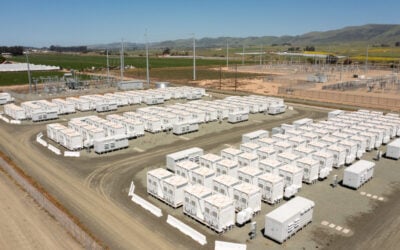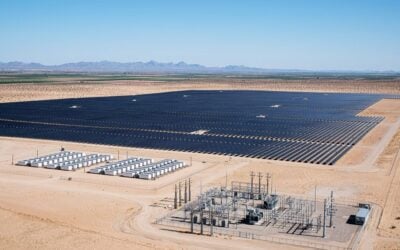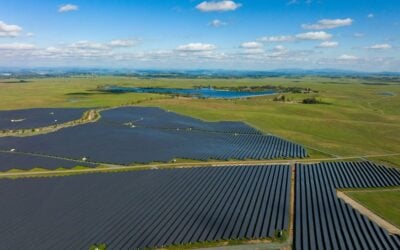Ice Energy's Ice Bear 30 unit. Image: Ice Energy.
The Southern California Public Power Authority (SCPPA), an organisation comprising the municipal utilities of 10 cities and one irrigation district, has ordered a potential 1MW of ice battery storage systems from Ice Energy.
The systems, to be installed at customer residences, will help the utilities to tackle the difficult problem of mitigating residential peak demand “in a reliable and cost-effective manner”, Ice Energy CEO Mike Hopkins said.
Enjoy 12 months of exclusive analysis
- Regular insight and analysis of the industry’s biggest developments
- In-depth interviews with the industry’s leading figures
- Annual digital subscription to the PV Tech Power journal
- Discounts on Solar Media’s portfolio of events, in-person and virtual
Up to 100 systems, each of 9.6kW, will be deployed, replacing the outdoor condensing units of homeowners’ air conditioning systems. Ice Energy’s ice battery uses copper coils to pump cold refrigerant through regular tap water, making ice, with the idea being that this can be done during off-peak hours.
The residential model, branded Ice Bear 20, can cool a home continuously for four hours, with the company claiming it can save 95% of associated electricity costs. The larger Ice Bear 30 model is available to commercial users.
Ice Energy claims Ice Bear is smart-grid enabled, including bi-directional communications technology and can completely replace existing home air conditioning units. The systems installed for SCPPA should allow the utilities to reduce their peak demand, in effect saving energy, increasing efficiency and lowering emissions. The four hours’ continuous cooling they offer allow the utility to load shed for that time.
Evaluating the thermal storage proposition
The SCPPA systems will be installed by the end of this year, with installations beginning in June. Their performance will be evaluated and reported to SCPPA. Backed by a five-year warranty, the Ice Bear systems will be owned by participating homeowners and installed by local Heating, ventilation and air conditioning (HVAC) professionals.
Another maker of cooling energy storage, Viking Cold, told Energy-Storage.News in May last year that an unnamed California utility was investigating using its products to help counter the challenge posed by the famous “duck curve” of PV energy supply and demand. It is thought that procurement of such systems can be counted as contributing to the mandated 1.3GW of energy storage California utilities must procure under AB2514.
Meanwhile up to US$5 million of systems from Axiom Energy, which freeze tanks of salt water using excess energy from refrigerators, were being offered to business customers of New York utility Con Edison in September.
Approaching the thermal storage proposition from the opposite end – heating – UK manufacturer Sunamp makes 'heat batteries' that use phase change materials to keep houses and businesses warm and claim best-in class efficiencies and price per kilowatt hour of energy stored. Meanwhile domestic heating manufacturer Glen Dimplex will deploy its Smart Electric Thermal Storage systems in up to 1,250 homes in a part EU-funded trial that will assess the whole network benefits of energy storage, including the use of thermal energy storage systems when coordinated by an aggregator.






